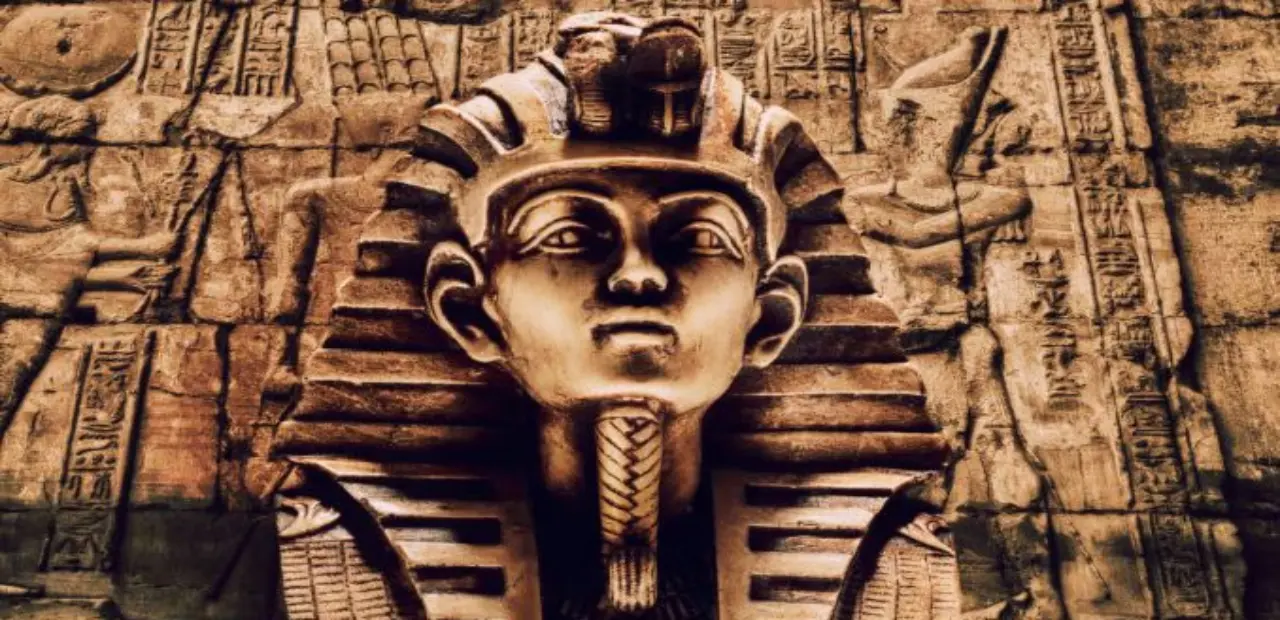- Historical
- 2025-05-20
The Pharaonic civilization is one of the greatest and oldest civilizations in human history, leaving an indelible mark through numerous Egyptian symbols and historical landmarks in Egypt that continue to captivate the world today. Among the most prominent figures of this civilization is King Tutankhamun, who stands as an iconic symbol associated with countless mysteries of ancient Egypt. In this article, we will explore the enigma of the Pharaoh of ancient Egypt, King Tutankhamun — who he was and why he remains a historical puzzle that intrigues researchers and tourists from around the world.

Who Was King Tutankhamun?
King Tutankhamun is one of the most famous Pharaohs of ancient Egypt. He ruled during the 18th dynasty, a period known for cultural and religious renaissance. Likewise, he ascended to the throne at a young age, around nine years old, following the death of his father Akhenaten. Although his reign lasted less than ten years, the discovery of his tomb in the Valley of the Kings in 1922 revived global interest in his history and persona.
Secrets of King Tutankhamun’s Tomb
The discovery of King Tutankhamun’s tomb remains one of the greatest mysteries of ancient Egypt. The tomb was not just an archaeological site but a window into the life and culture of the ancient Egyptians.
Key features of the tomb:
- It contained more than 5,000 artifacts.
- The presence of Egyptian symbols documenting burial rituals and religious beliefs.
- The discovery of the golden sarcophagus, one of the most prominent historical landmarks in Egypt.
- Thus, King Tutankhamun's tomb has become a major archaeological attraction and an essential part of the map of ancient Egypt.
King Tutankhamun’s Place in History
On the other hand, King Tutankhamun is not known solely for his political or military role but is more famously associated with the groundbreaking archaeological discovery that changed the world’s perception of the Pharaonic civilization. Wherever discussions about the mysteries of ancient Egypt arise, his name stands out as a symbol of hidden secrets and buried treasures.
Historical Landmarks Related to King Tutankhamun
Based on the map of ancient Egypt, several significant sites are associated with King Tutankhamun:
- Valley of the Kings: Where his tomb was discovered.
- The Egyptian Museum in Cairo: Home to many of his archaeological treasures.
- Karnak Temple: Reflecting aspects of religious culture during his era.
- These landmarks form part of Egypt's cultural heritage, attracting tourists and strengthening Egypt's position as an unparalleled travel destination.
Egyptian Symbols During King Tutankhamun’s Reign
On another note, some of the most prominent Egyptian symbols that emerged during King Tutankhamun's reign were related to ancient Egyptian religious beliefs. For instance, the winged scarab and the Eye of Horus, which was believed to provide protection and wisdom. Consequently, these symbols remain a significant part of Egyptian identity, still present in arts and culture.
The Impact of King Tutankhamun's Tomb Discovery on Tourism
Finally, the discovery of King Tutankhamun’s tomb had a profound impact on tourism in Egypt. Wherever his name is mentioned, tourists from around the world are drawn to explore historical landmarks in Egypt and learn more about the map of ancient Egypt.
Key lessons learned from the discovery:
- Raising awareness about the importance of cultural heritage.
- Increasing visitor numbers to Egyptian archaeological sites.
- Highlighting the need to preserve these sites for future generations.
Conclusion
While King Tutankhamun remains a mysterious figure surrounded by many of the mysteries of ancient Egypt, he successfully stands as an enduring icon representing the greatness of the Pharaonic civilization. Through the map of ancient Egypt, Egyptian symbols, and historical landmarks, his legacy continues to reflect one of the most inspiring periods in human history.
If you are interested in uncovering more mysteries of ancient Egypt and visiting historical landmarks in Egypt, a journey to these sites will undoubtedly be a rich and thrilling experience.